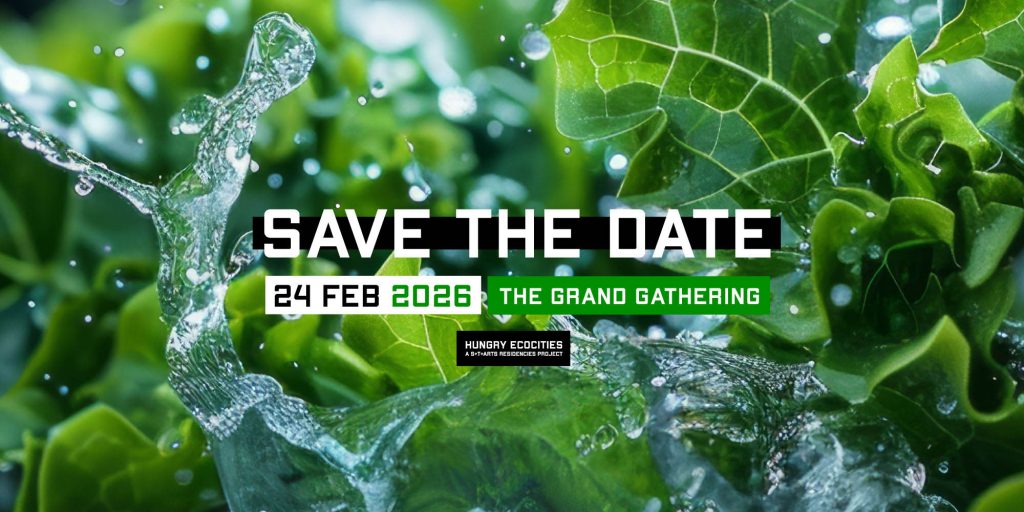At the European Robotic Forum (ERF) in Rotterdam (28-30 June 2022), Waag has organised a three-day demonstration of the projects from the S+T+ARTS family that are related to the robotic industry, namely Better Factory, Vojext, and STARTS Prize while introducing art-driven innovation to the DIH2 network.
The ERF is an annual 3-day event and one of the most influential event for the robotics and artificial intelligence community in Europe. It is the meeting point for engineers, academics, entrepreneurs, investors, as well as end-users and policy makers in the field of robotics from all over Europe and beyond.
On 29th, a workshop with a keynote by Johannes Braumann (Creative Robotics at the University for Arts and Design in Linz) and curated by Miha Turšič (Waag) enjoyed a full-house presence of participants. In his keynote, Braumann highlighted that as the robotic industry advanced, some companies started to radically rethink the process of developing the technologies; professionals from the creative industry such as artists are very good at that. Architects and designers, who are professed in parametric design and generative design, keep the industrial constraints in mind, while providing visions that might go beyond the current dominant imaginations of the field. In this way robots can also co-learn and co-perform with artists.
For instance, in one project, working with a guitar musician, robot arms were learning to play guitar, and the musician changed the timing and adjusted the process for the robot, till when they could jam with the robots on stage. The algorithms are trained in a more intuitive way. This way of developing robotics makes it easier to teach robotics to no-engineers, as it combines what a robot can do, and a person can do.
During the workshop, the question of safety in the field of robotics was raised, also in relation to a project (showcased during the talk), in which a gigantic robotic arm was dancing with a dancer in a performance festival. Braumann admitted that it would not have happened if it were in an industrial setting, and it was difficult to find a middle way between risk taking and having safety and liability. Arts give more space to experiment and imagine.
Another question was about how to make this kind of unreachable project that stems from the collaboration between artist and the industry survive without making useful results. Braumann replied that artists often overcome problems creatively and they tend to find other people to solve the technical problems. He pointed out that it is important to cultivate a knowledge community with researchers, technologists, and professionals from the industry to not only facilitate the process, but also to transfer the innovation to the industry.
During the workshop, another professional working on exoskeleton technology asked how collaboration with artists can improve the technology. Miha Turšič gave an example of Stelarc, an artist who has been working on mechanic body extensions and working with robotics for more than 20 years. He has been questioning what it means to have a body, given that the body might not be perfect and fully functional. Turšič also shared another example, of the artists Louis-Philippe Demers & Bill Vorn, who made a collaborative performance in which the extra skeleton controlled the body and made it dance to music.
This led to another question concerning the acceptance of skeletons in the factory floor.
In this light, the questions and views of artists can be crucial in developing skeleton technology—as it is about our relationships to human bodies and more than human bodies.
Afterwards, Braumann joined the STARTS Talk panel discussion with artists nominated for S+T+ARTS Prize: Anna Dumitriu & Alex May, and Marcel van Brakel from Polymorph. This panel was moderated by Lucas Evers (Waag).
Dumitru and May talked about their S+T+ARTS residency in Schindler that looked into robots and diversity, and explored what it would be like to share social spaces with robots. Involving artists in developing technology can be helpful in addressing thorny subjects and blind spots that engineers might not have considered.
Marcel van Brakel presented Polymorph, an interdisciplinary design collective that has worked with soft robotics and VR experience. He explained that Symbiosis, their nominated project for the S+T+ARTS, used soft robots and VR to forecast speculative scenarios, and investigate the implications for society. The project provides the experience on how to be another species. The collective brings robotic projects into film festivals and theatre festivals such as IDFA (International Documentary Festival Amsterdam) and Holland Festival, which encourages people to imagine futures through and with robotics.
Johannes Braumann remarked that making education for creative robotics accessible and having co-creation and collaboration in the process are important for the robotics field to have breakthroughs, and out-of-box thinking of art projects that work with robotics that are shown in occasions such as Ars Electronica Festival can inspire people in the industry to innovate. The industry can create prototypes together with artists and stage shows with robots, and through media, the narrative about robotics can be changed.
Anna Dumitru is now working on a biological robot that makes use of robotics and epigenetics, van Brakel speculated that future technologies would hybridise with nature and chemicals, and he asked “what if there is a 3D printer inside my body? What if there is a biological robot that creates medicine within my body?”
What is shared among these artists is a persistent “amateurism”. Van Brakel mentioned that he started making robots by watching online tutorials. Braumann stressed the importance of accessible public knowledge of this field. Dumitriu echoed that artists like her would ask questions of scientists and technologists and realise that a lot of things they have thought of come from their own disciplines. Polymorf’s Famous Deaths project became so successful that the perfume industry wanted to incorporate it. It was not because the collective had invented new technology that outperformed the perfume industry, but rather, their imaginative and creative ways of asking questions and retooling technologies.

